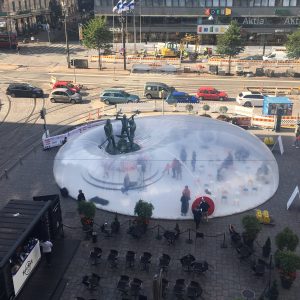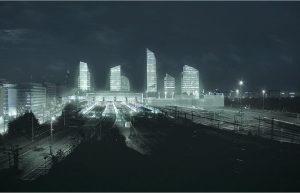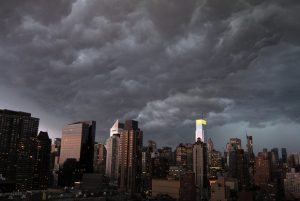Presenting today a paper on narrating the waterfront in crisis at the University of Florence, at the conference “cross-disciplinary perspectives on urban space”. Full programme can be found here. Abstract below:
Narrating the Waterfront in Crisis
Juxtaposing Narratives of New York’s waterfront under threat in Literary Fiction and Planning
Lieven Ameel
dr., docent, university lecturer in comparative literature
University of Tampere, Finland
lieven.ameel@uta.fi
Urban studies has recently seen the emergence of a new paradigm: that of the resilient city, with its focus on urban readiness for disruptive change. The crisis-awareness in urban theory is aptly mirrored in contemporary city narratives, from literature to the big screen, in which urban dystopias as well as more subtle depictions of a city in crisis proliferate, attuning the public to unsettling possible futures and alternative storyworlds. Narrative is a key concept for how people make sense of the possibility of future threats, and for how urban policy projects action in the face of such threats. Following what has been called a ”narrative”, ”deliberative” or ”communicative” turn, city planners are increasingly making use of techniques from literary fiction, projecting scenario’s, and acting as curator’s of sorts between different story lines (Ameel 2014; Cohen 2008, 111-115). This paradigm shift in urban planning simultaneously highlights the importance of incorporating local voices and cultural stories into planning and policy, as well as foregrounding the communicative aspect of planning for the future.
In my paper, I will examine narratives of the New York waterfront from two distinct, but intermingling perspectives. First, I will look at how narrative fiction frames the experience of a waterfront in crisis, and how it presents the possibility of alternative futures. Ben Lerner’s novel 10:04 (2014) and Nathaniel Rich’s Odds against tomorrow (2013) are particularly revealing texts, but I refer also to other relevant novels such as Jonathan Lethem’s Chronic City (2009). Second, I will examine how, in the department of city planning’s comprehensive waterfront plans (1992, 2011), the simultaneous possibility of alternative storyworlds structures the way policy is shaped. I am interested in particular in the concept of temporal orchestration, which organizes the elements of the plot around the reader’s interest in alternative storyworlds (Dannenberg 2008).
Sources:
Ameel, Lieven 2016 (forthcoming): “Emplotting urban regeneration: Narrative strategies in the case
of Kalasatama, Helsinki.” In Rajaniemi, Juho (ed.) DATUTOP.
Cohen, Philip 2008: “Stuff Happens: Telling the Story and Doing the Business in the Making of
Thames Gateway.” In Cohen, Philip & Rustin, Michael J. (eds.): London’s Turning: Thames Gateway: Prospects and Legacy. Aldershot: Ashgate, 99–124.
Dannenberg, Hilary P. 2008: Coincidence and Counterfactuality. Plotting Time and Space in
Narrative Fiction. Lincoln: University of Nebraska Press.



